

January 7 started like any other Tuesday night at Los Angeles’ Carmel since the upscale Melrose Avenue Mediterranean restaurant opened eight months earlier — packed, buzzing and full of joyous faces savoring mushroom cigars and red snapper schnitzel. But then abnormally strong winds picked up. Hurricane-force Santa Anas started whipping fiery embers erratically across town in both directions, mercilessly spreading what would become the third and fourth biggest wildfires in California history.
“The entire block lost power around 8 p.m., [which left] the restaurant so dark with no music or computers,” says Carmel executive chef and co-owner Asaf Maoz. “But we were full [so] we worked in the kitchen with headlamps and iPhone flashlights. We managed to turn it into a magical night full of candles and jazz.”
That charmed feeling didn’t last long. Carmel shuttered for three days as the outage persisted. Overnight, and for the month that followed, a debilitating pall fell over the city as a series of 10 ferocious blazes decimated large swaths of Los Angeles County, destroying at least 16,249 structures (11,500 of which were homes), displacing more than 10,000 families, killing at least 29 people and likely causing upwards of $250 billion in damages and economic loss.
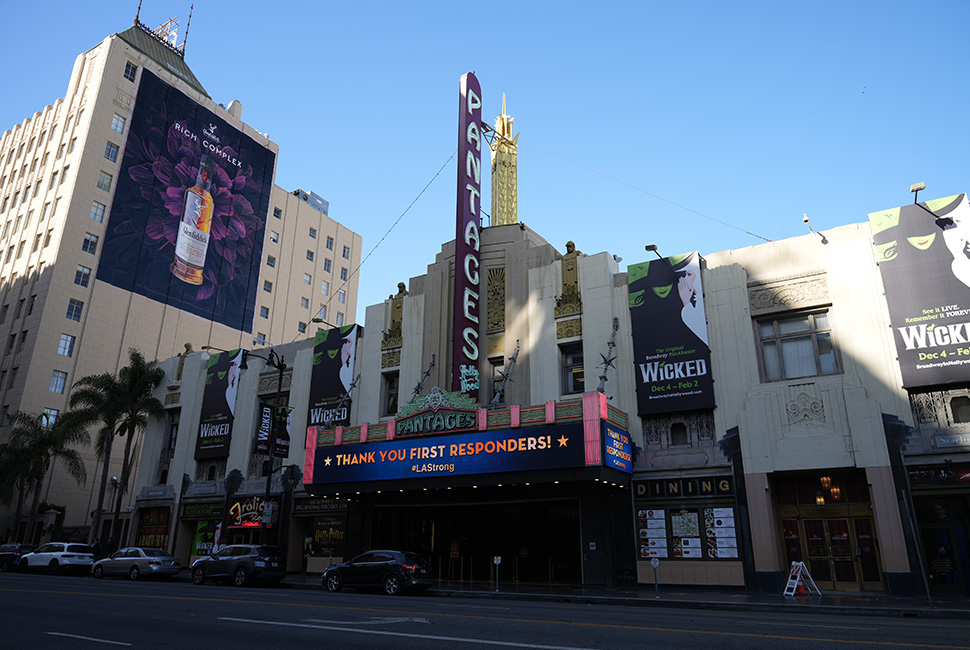
“In terms of the scale and scope and the costs associated with it, I think it will be [the worst natural disaster in the history of the United States],” California governor Gavin Newsom told Meet The Press before assuring the reporter the tragedy would not stop L.A. from hosting the World Cup in 2026, the Super Bowl in 2027 and the Olympics in 2028. “It’s going to be a long recovery process, but I’m optimistic. [Those events] reinforce the imperative.”
Key to that recovery and rebuilding will be tourism, according to Caroline Beteta, president and CEO of Visit California. “Tourism in L.A. County generates $3 billion in travel-related state and local tax revenues which fund essential public services, including infrastructure, safety and more,” Beteta says. “Planning a trip to L.A. is more essential than ever. Staying in a hotel, dining out, experiencing a cultural or entertainment attraction is one of the best ways you can help people.”
Adam Burke, president and CEO of the Los Angeles Tourism Board, concurs. “Much like the entertainment industry, tourism is one of the biggest contributors to our local economy and most significant drivers of employment,” Burke says. “More than 530,000 Angelenos and thousands of businesses depend on visitors for their livelihoods. But in moments like these, tourism does more than drive the economy. It becomes a lifeline in supporting community recovery.”

L.A. Tourism’s Immediate Dropoff
As it happens in the aftermath of all disasters, travel dropped. Even locals stayed home for the most part in the beginning.
“You could feel the impact of the fires across the city. It felt like COVID 2.0,” Maoz recalls. “People didn’t feel comfortable going out to eat or celebrate. [They] left the city for areas with less air pollution. We weren’t used to an empty restaurant. We put everything we had into this without financial backing so those first two weeks were very scary.”
People tend to stay away from disaster zones for good reasons. They don’t want to hinder the emergency response or take valuable resources like hotel rooms away from victims. (For the record, though, Burke says overwhelming lodging was never an issue as there are more than 100,000 hotel keys across the region. Also, none of the three major area airports were disrupted.)
Post-fire investigating by Visit California did find a problem, though. “Research shows that consumers can overestimate a fire’s impact by as much as 50%, thinking more damage was done,” Beteta says. “In reality, L.A. County is 4,084 square miles, bigger than Rhode Island and Delaware combined, and more than 98% of L.A. County was not in a burn area. That puts into perspective how vast the L.A. County is. The visitor experience is largely unaffected.”
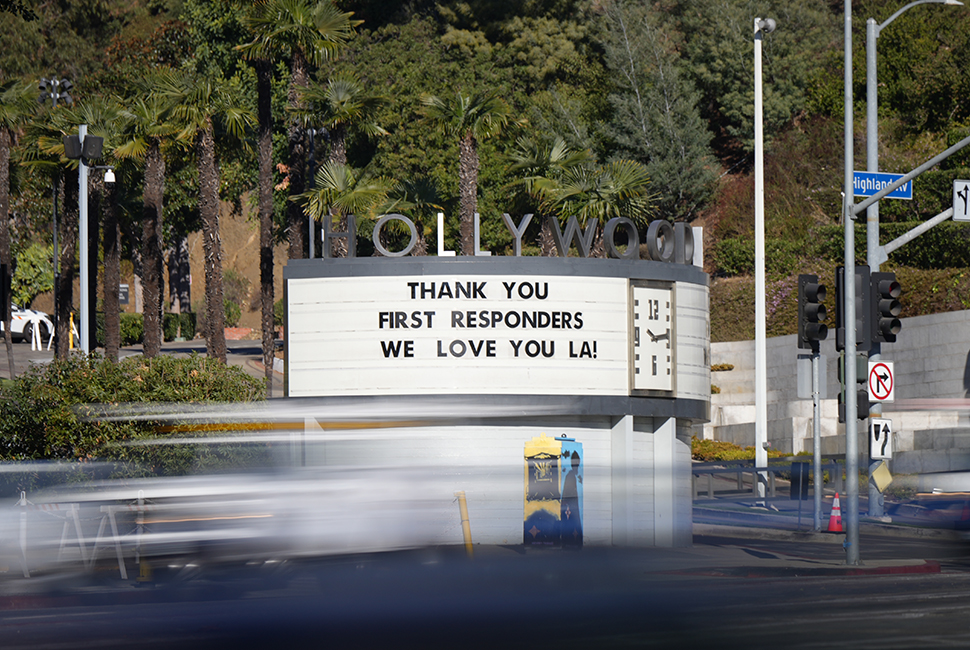
The Damage Done
Although tourism statistics are headed in the right direction and the devastation is concentrated within a relatively small portion of L.A. County, the amount of loss is staggering. Even if they didn’t lose possessions or have to evacuate, most Angelenos know someone who, in a matter of hours, lost everything. Many more had packed go bags, rummaged through drawers trying to find important documents and prized possessions, and then sat paralyzed by anxiety, constantly refreshing the Watch Duty app as fires and winds changed directions.
“The wildfires had a devastating impact, particularly on Altadena, Pacific Palisades and Malibu, where communities faced significant loss and displacement, but L.A. is a city built on resilience, creativity and an unwavering sense of community,” says Gabriel Ratner, COO of Proper Hotels, which runs properties in downtown, Santa Monica and Malibu. “In the wake of the fires, the way Angelenos and the hospitality industry came together was a powerful reminder of the city’s strength and showed the true heart of this community.”
As the firefight carried into the second and third weeks, news of beloved local places being affected circulated. Filming locations, hiking trails, attractions like The Bunny Museum, buildings in Will Rogers State Historic Park and historic homes by Richard Neutra and Rudolph Schindler were all destroyed. Popular dining spots such as Reel Inn Malibu, Moonshadows Malibu and The Little Red Hen Coffee Shop were decimated. While saved, the Getty Villa remains closed.
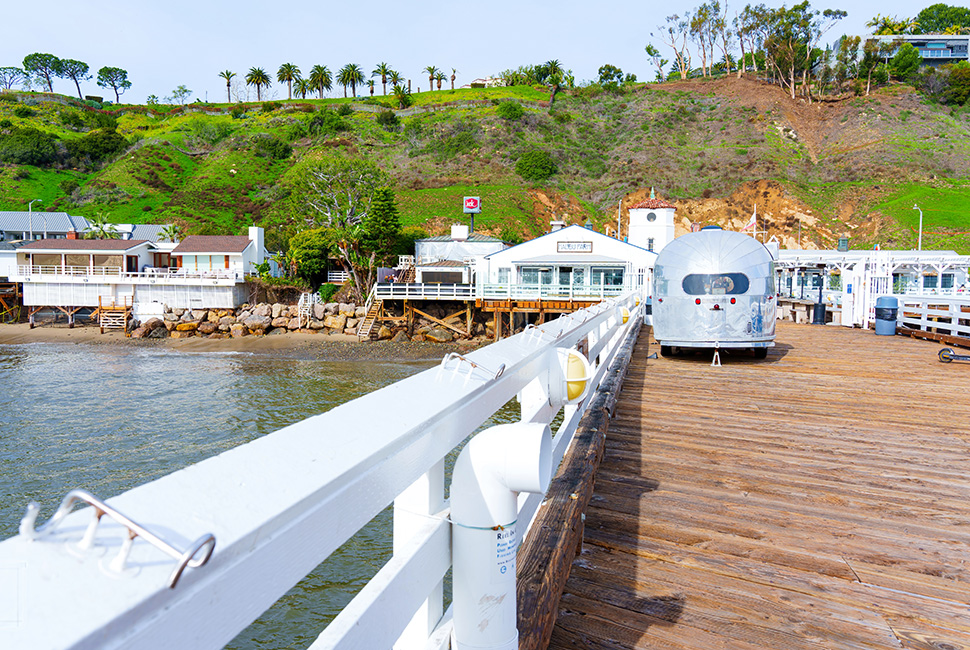
Issues stemming from the wildfires and subsequent flooding and mudslides that occurred when storms rolled through in late January and mid-February continue to make burn-area businesses nervous for guests’ return. Fire debris litters Surfrider and other prized beaches. Ocean water quality advisories are still in effect from Malibu to Playa del Rey. Access to the Pacific Coast Highway, one of the world’s most scenic drives, remains limited.
“What used to be a scenic, leisurely oceanfront is now heartbreaking,” Malibu Farm founder Helene Henderson says. “It’s overwhelming to grasp the massive clean-up operation that has to take place before anything can begin to return to normal.”
Despite her 13-year-old Malibu Pier restaurant and café being popular on social media, Henderson is concerned about the reduction in business. “Malibu is still very quiet,” she says. “Revenue is expected to be significantly down for a very long time. With limited road access, the commute is up for staff and guests. We depend on residents and day visitors from [other parts] of L.A., especially in the winter, and so many lost homes and jobs that dining out is the last thing on their minds.”
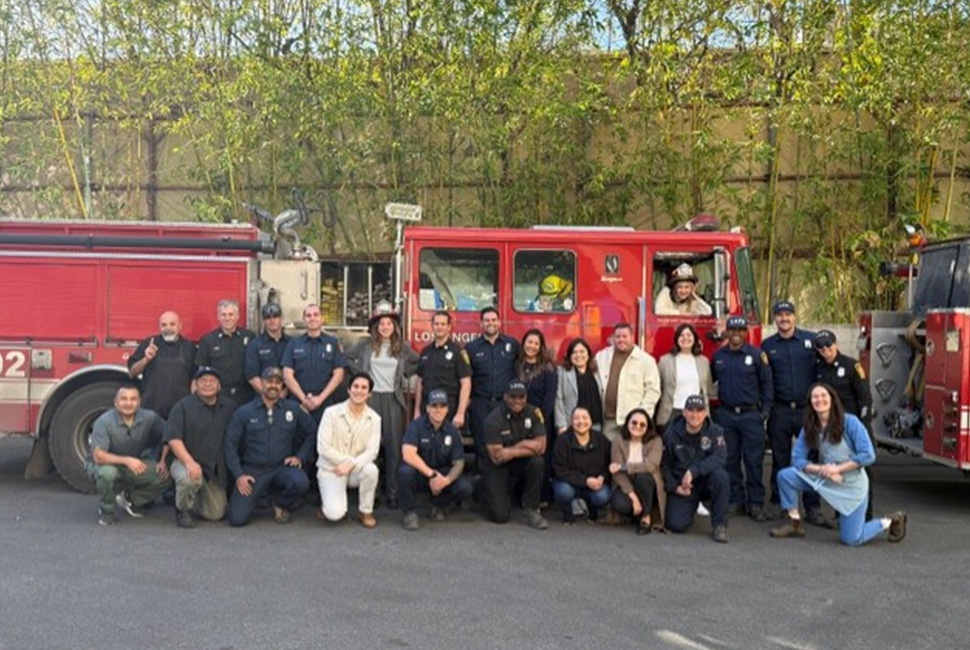
Hospitality’s Early Response
Despite being a challenging time for the hospitality industry, the owners of Bacari Restaurant Group’s seven establishments felt called to support the community — no matter the cost. “People needed a place to gather, take a break and have a warm meal, so we stayed open and did what we could to provide that sense of comfort,” Bacari co-owner Robert Kronfli says of donating 20,000 meals to the Los Angeles Food Bank. “Restaurants are at the heart of the community. Food brings people together, and in tough times, that sense of connection is more important than ever.”
Bacari was not alone in the desire to pitch in during some of the city’s darkest days. Many from the hospitality and tourism sector rushed in to feed and shelter evacuees and first responders. They set up donation drives, fundraised, stockpiled essentials like toiletries and provided staging areas for firefighters and the media.
“When disaster strikes, our industry plays a critical role in recovery,” says Daniel del Olmo, president of Sage Hospitality Group, which counts The Pierside Hotel and Hotel Per La among its local lodgings. “[The industry’s] purpose is to enrich lives, which means showing up when people need us most.”
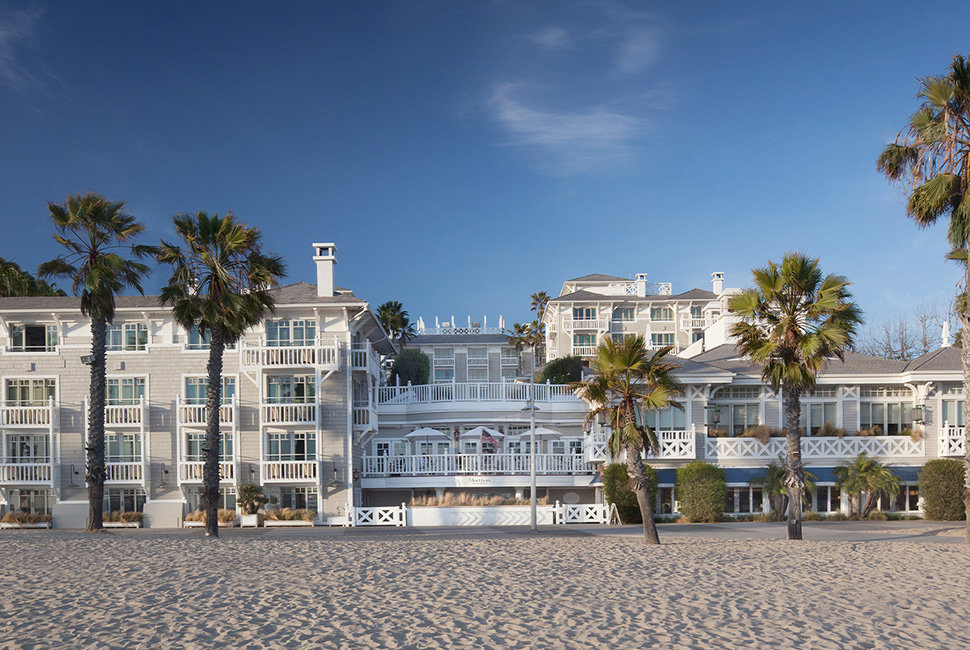
And show up, they did. Hoteliers big and small immediately started offering free or reduced-rate rooms, waiving resort and pet fees, and assembling personal care kits. According to the Hotel Association of Los Angeles, more than 50 hotels — including Regent Santa Monica Beach, Fairmont Miramar Hotel & Bungalows and Forbes Travel Guide Recommended properties Nobu Ryokan Malibu, InterContinental Los Angeles Downtown and 1 Hotel West Hollywood — offered discounts to displaced victims and firefighters.
Hilton donated 20,000 free hotel nights, even at properties such as Four-Star Beverly Hilton. Its hotels transformed meeting spaces into comfort zones for families, contributed to the Los Angeles Fire Department Foundation and allowed Hilton Honors members to donate points to the American Red Cross and other nonprofits helping the relief effort.
Some hotels even went beyond that. Four-Star Hotel Casa del Mar, for example, brought in a mobile pet groomer for furry evacuees and started a wash-and-fold laundry service. Across the street, Four-Star Shutters on the Beach, which recently completed a lobby renovation, donated the replaced furniture to the affected through Santa MoniCARES, a do-gooder offshoot of Santa Monica Travel & Tourism.
Four-Star Terranea Resort added numerous amenities to make families feel more at home during their emergency stays, such as nightly movie screenings, a game room, complimentary gelato for kids and an outdoor basketball hoop for a high school player who was staying there.

Chefs and restaurants also answered the call. José Andrés, whose Four-Star San Laurel sits within Conrad Los Angeles downtown, and his World Central Kitchen team have served more than 700,000 meals in Southern California since January 7. WCK was aided in cooking, delivery and other duties by other well-regarded chefs, including Roy Choi, Evan Funke, Kim Prince, Greg Dulan, Dave Beran and Lime Truck owner Daniel Shemtob, who volunteered despite losing his home in the Palisades fire.
Other eateries distributed meals at temporary shelters and churches (A.O.C.), donated portions of their proceeds from certain services and events (L’antica Pizzeria da Michele, Baroo, Linden, Camelia ) and had menu specials (BOA Steakhouse, OTOTO, n/soto) to raise funds for WCK, the L.A. Fire Department Foundation and other entities providing wildfire relief.
“In times of crisis, the hospitality industry has always stepped up — not because it’s expected, but because it’s part of our DNA,” Proper Hotels’ Ratner says. “Hospitality is about more than just providing a place to stay. It’s about taking care of people when they need it most. Would we do it again? Without question. We’ll always stand with the communities we call home.”
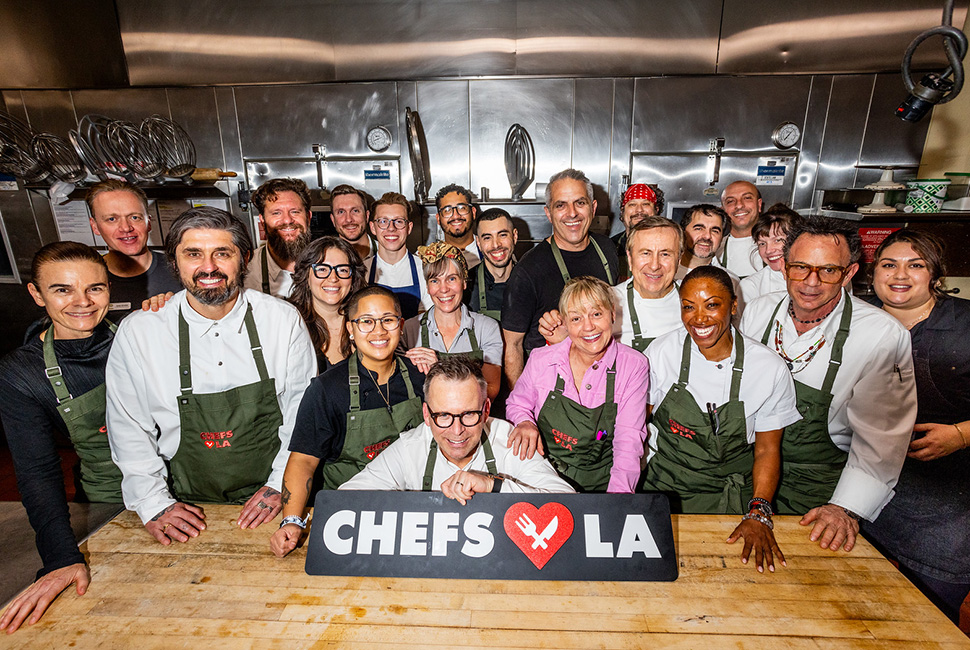
Evolving Strategies
When the emergency need for hosting and feeding subsided, several hotels and restaurants found other creative ways to fundraise. Sandbourne Santa Monica, Autograph Collection gave 20% of proceeds from a Galentine’s floral arranging class to the California Community Foundation’s Wildfire Recovery Fund and chose wildfire relief organizations as the recipients of money drummed up at a monthly artisans’ market and raffle.
The Pierside Hotel featured a romantic February package that included a donation to the LAFD alongside bubbles and chocolate. Lawry’s Prime Rib hosted the sold-out Chefs Love LA event on February 27, which brought together top chefs like Suzanne Goin, Daniel Boulud, Katianna Hong, Curtis Stone and Michael Cimarusti among others to benefit Restaurants Care and WCK.
Forbes Travel Guide Recommended Beverly Wilshire, A Four Seasons Hotel held a series of rooftop workout classes with celebrity trainer Isaac Boots, where all ticket sales went to WCK.
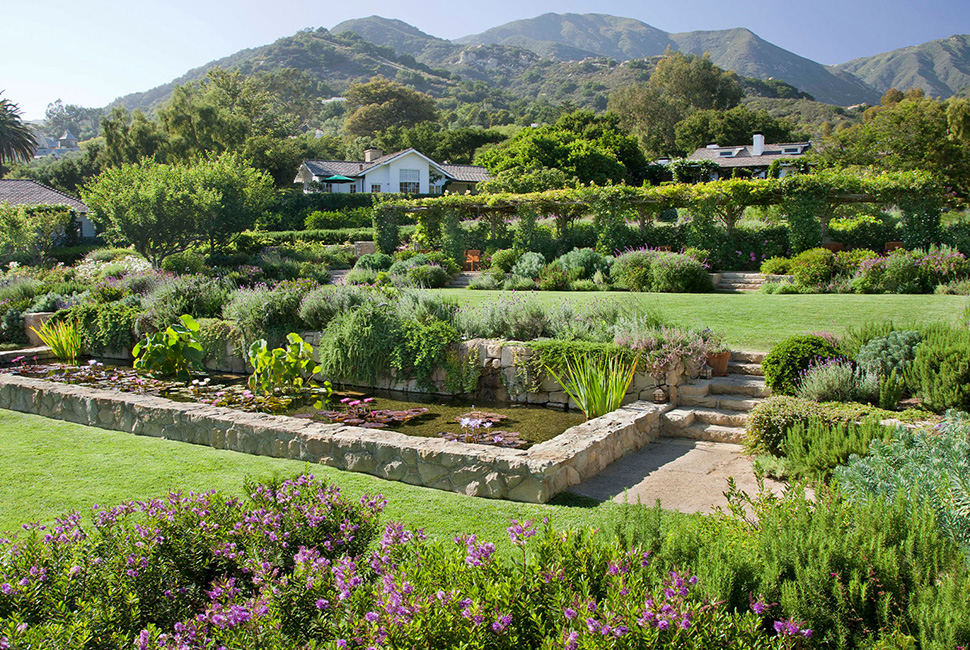
Andaz West Hollywood’s gallery is staging an L.A.-themed exhibition through March. On opening night, it raised money with specialty cocktail sales and an auction for a custom work by artist Pete Kasprzak.
Palisociety, which offered comped stays at all eight of its whimsical L.A. area boutiques, convinced partners like Bellino Fine Linens and Cloud Paper to donate products to victims and is ponying up a portion of the sales of the five-piece capsule furniture collection it debuted on February 10 to LAFD.
Help came from out of town as well. The speakeasy at Montecito’s Four-Star San Ysidro Ranch gave 14% of proceeds from a special menu throughout February. Palisades Tahoe hosted Ski for a Cause last month. With help from Alterra Mountain Company, the 75-year-old resort sold 903 tickets and did a dollar-for-dollar match to raise $269,191 for the California Fire Foundation.
“It was incredibly moving, the industry stepping up without hesitation and Angelenos showing up to donate, volunteer and support however they could,” Bacari’s Kronfli says. “It really proved that, despite what people say about L.A. being disconnected, this city has heart, and we take care of each other. No matter the outside noise, political or otherwise, what really matters is what we do for our neighbors.”
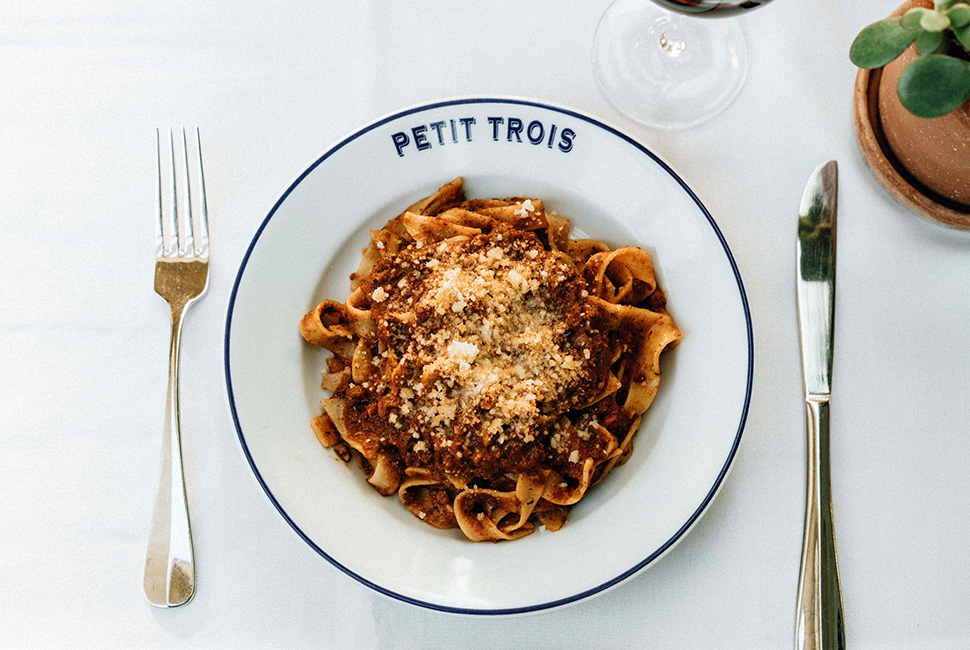
How Tourists Can Help Now
Relief efforts come at a cost in an already-challenging economic landscape. Visitors are essential. Travelers coming to town put more money in the tills and back into the economy, which means businesses can afford to give more of their time, talent and resources.
“Increased business means Sage properties can continue providing shelter and meals and supporting rebuilding efforts,” del Olmo says. “By choosing L.A. now, visitors aren’t just experiencing an unforgettable destination; they’re making a meaningful impact on its recovery. Every hotel stay, every meal at a local restaurant and every visit to a museum or small business helps fuel the city’s economic engine, supporting the people who make L.A. so special.”
What kind of tourist you are is also important. “Every visit makes a difference, but thoughtful tourism can help uplift the community,” Ratner says. “Many residents are still rebuilding. We encourage visitors to stay informed, follow local updates on affected areas and approach their time in L.A. with empathy and awareness.”
When planning a trip, consider “paying back” the aforementioned hotels, restaurants, destinations and brands for their good deeds with your wallet. Some even have fundraising initiatives and programming in place. Both Proper and Sage have charitable arms that will allocate all of the first-quarter funds raised from stays to organizations leading the charge of recovery and relief.
The Culver Hotel recently extended a two-night package that gives back. The Portofino Hotel & Marina in Redondo Beach launched the Stay for a Cause promotion which saves 15% of the reservation for the Baby2Baby nonprofit.
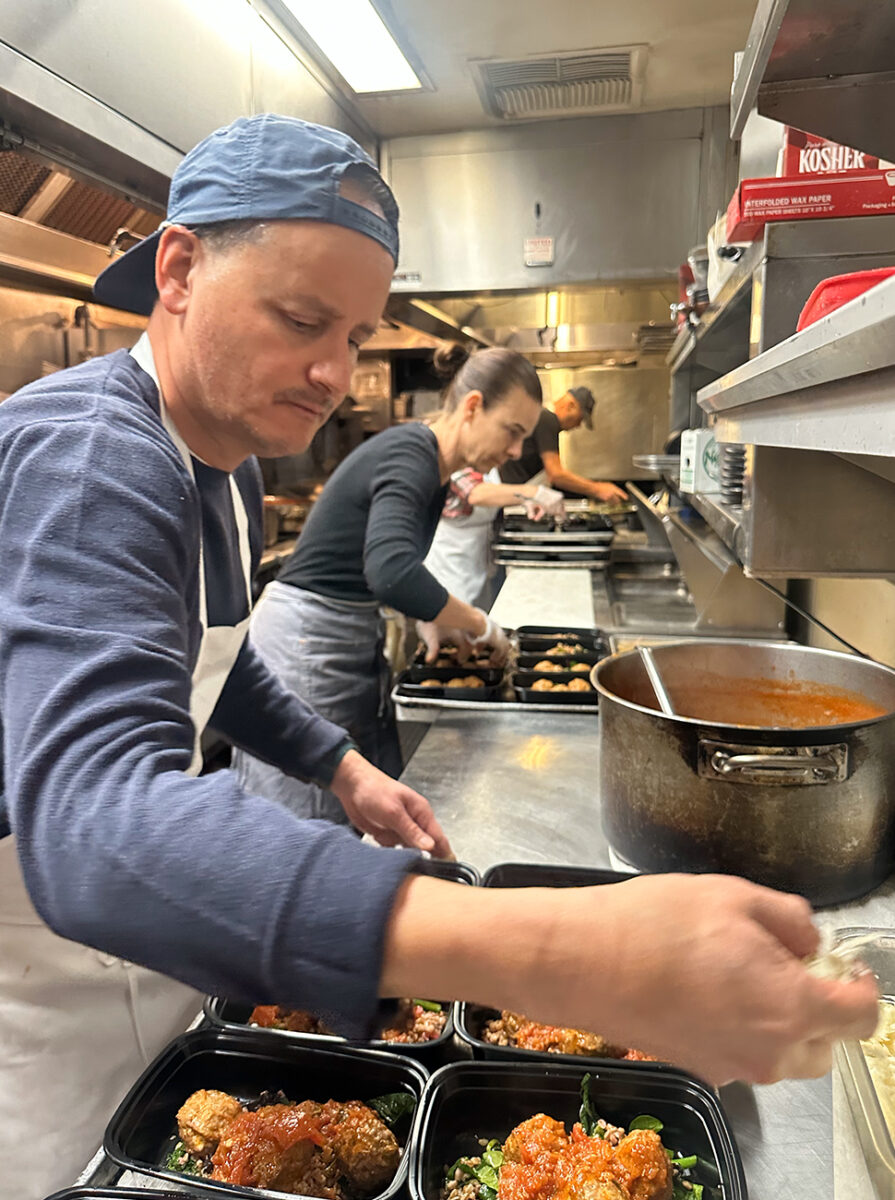
Plenty of restaurants are still offering ways to turn cravings into donations, too. Following in the footsteps of last month’s Dine LA and Beverly Hills’ EAT.DONATE.LOVE restaurant week initiatives, Eat + Drink West Hollywood has also added a charitable component. From March 7 to 31, Visit West Hollywood will donate $1 for every dine-in reservation made at roughly 200 restaurants and bars to Restaurants Cares, a nonprofit that helps affected food and beverage workers.
Some spots are making kind-hearted dining easy by designating specific menu items. Pink’s has a charity hot dog. Both the L’Original and Le Valley outposts of Ludo Lefebvre’s Petit Trois are donating a portion of each steak frites or tagliatelle bolognese sold to WCK. Ditroit, Enrique Olvera’s downtown taquería, invites guest chefs to curate a weekly taco. The collaborations are announced on Instagram, and 100% of the proceeds are given to affected communities. Malibu Farm is selling a Malibu Forever Valentine T-shirt and donating some proceeds to PROJECT HOME.
“L.A. is safe and open for business,” Los Angeles Tourism Board’s Burke says. “And we need your business now more than ever.”
